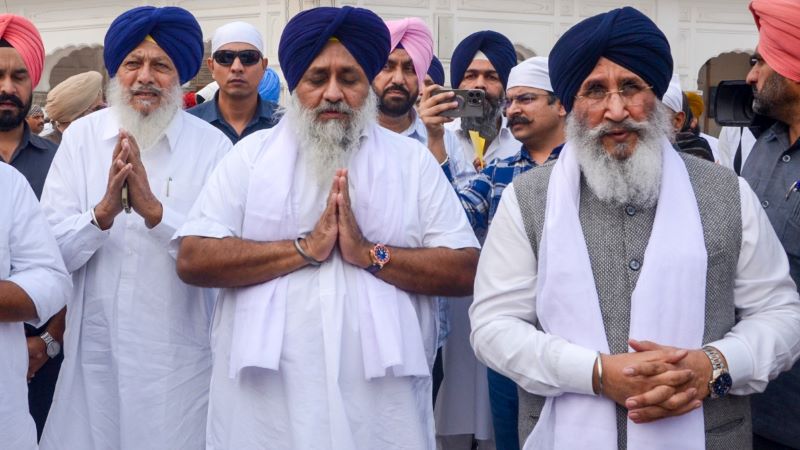 The Shiromani Akali Dal (SAD), one of the oldest regional parties in India, has historically played a significant role in shaping the political landscape of Punjab. Known for its close association with Sikh identity and agrarian issues, the party has been a dominant force for decades. However, in recent years, the Akali Dal has faced significant challenges, raising questions about its future in Punjab’s political arena.
The Shiromani Akali Dal (SAD), one of the oldest regional parties in India, has historically played a significant role in shaping the political landscape of Punjab. Known for its close association with Sikh identity and agrarian issues, the party has been a dominant force for decades. However, in recent years, the Akali Dal has faced significant challenges, raising questions about its future in Punjab’s political arena.
Challenges Facing Akali Dal
Loss of Credibility:
The Akali Dal’s credibility took a hit due to its alliance with the Bharatiya Janata Party (BJP) and its support for contentious policies such as the farm laws introduced in 2020. Although SAD eventually broke ties with the BJP over the farm laws, the damage to its reputation among the agrarian community was substantial.
Declining Sikh Support:
Traditionally seen as the custodian of Sikh interests, the Akali Dal has faced criticism for its handling of key religious issues. Allegations of interference in the functioning of the Shiromani Gurdwara Parbandhak Committee (SGPC) and incidents such as the sacrilege cases in Bargari have eroded its support among the Sikh electorate.
Emergence of AAP and Other Players:
The rise of the Aam Aadmi Party (AAP) in Punjab has created a significant challenge for SAD. AAP’s victory in the 2022 Assembly elections highlighted the demand for alternative governance and a shift away from traditional parties like SAD and Congress. Other regional players, including breakaway Akali factions, have further fragmented the vote bank.
Urban Disconnect:
The Akali Dal has historically been rooted in rural and agrarian constituencies. Its inability to connect with the urban electorate, which is increasingly influential in Punjab’s politics, has left a vacuum that other parties have exploited.
Leadership Crisis:
The party’s leadership under Sukhbir Singh Badal has been criticized for being out of touch with grassroots issues. The absence of a strong second-rung leadership and reliance on dynastic politics has further weakened the party’s organizational strength.
Prospects for Revival
Focus on Core Issues:
To regain its footing, the Akali Dal must realign itself with its core issues of agrarian welfare, Sikh identity, and Punjabi pride. By championing the concerns of farmers, small traders, and youth, the party can rebuild its base.
Rebuilding Trust with Sikh Electorate:
Addressing unresolved issues such as sacrilege cases and ensuring transparency in SGPC affairs could help the party regain the trust of the Sikh community.
Forging Alliances:
While its break with the BJP marked a significant shift, the Akali Dal could benefit from forging new alliances with like-minded regional parties or independent leaders to expand its reach.
Empowering Grassroots Leadership:
Encouraging young and dynamic leaders to take charge at the local level can help rejuvenate the party’s image and connect with the youth.
Leveraging Regional Sentiments:
With a strong emphasis on Punjabi culture, language, and identity, the Akali Dal can tap into regional sentiments to differentiate itself from national parties.
The Road Ahead
The Akali Dal’s future in Punjab is contingent upon its ability to adapt to changing political dynamics and address its organizational weaknesses. While the challenges are immense, the party’s deep historical roots and ideological significance in Punjab’s politics give it a foundation to rebuild. By prioritizing issues that resonate with the electorate and demonstrating a commitment to clean and inclusive governance, the Akali Dal can aspire to reclaim its place in Punjab’s political landscape.
In a state where identity and governance are deeply intertwined, the Akali Dal’s revival depends on its willingness to introspect, reform, and reconnect with the aspirations of the people of Punjab. Whether it can overcome its current crisis and reemerge as a formidable political force remains to be seen, but its legacy ensures that it cannot be written off just yet.